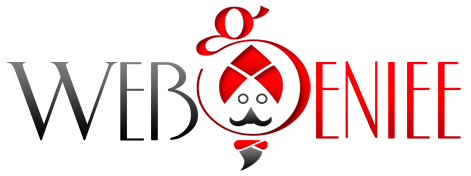An Introduction to Graphic Design
Do you think of graphic design? Graphic design communicates certain ideas or messages in a visual way and problem-solving through the use of typography, photography, iconography, illustration, posters, infographics, book covers, product labels, logos, business cards, signs, website layouts, mobile apps and software interfaces. Many designers are using typography and pictures to meet users’ specific needs and focus on the logic of displaying elements in interactive designs, to optimize the user experience.
These graphic design elements include:
- Color
- Form
- Line
- Shape
- Size
- Space
- Texture
These graphic design principles include:
- Balance
- Contrast
- Emphasis
- Movement
- Proportion
- Rhythm
Graphic Design is a complex art. To turn into a graphic designer, you need to master many different skills and tools. This course covers the graphic design ideas and software that each creator has to know and clarifies how they fit into a typical graphic design work process. Instructor Khurram Shahzad presents the innovative process, including significant level concepts like layout, typography, and color. Khurram shows you how to utilize Photoshop to build a custom logo technique. Before the finish of the course, you’ll have a superior handle of what graphic designers do and what you’ll need to learn next. It’s an extraordinary hopping off point for any graphic design career.
Topics include:
- Logo design
- Brand identity
- Social media ads
- Magazine Design
- Banners, brochures, and Flyers
- Web designing
- UI Design (Webpage, Apps, Games and theme designing)
- Print Media (books, newspapers, catalogs, newsletters, etc.
- Packaging design (labels, boxes, bottles, etc.)
- Typography
- Photography
- Digital illustrations (T-shirt designs, comics, concept art, infographics, etc)
- Freelancing
Creative Brief
A decent Innovative Brief is created by the customer or designer, and as often as possible together. It frames the meaning of a task and needs to illuminate everybody taking a shot at it of its objectives, its scope and vision. It’ll recognize the target audience, the general targets, and the potential lifespan of the task, alongside any imperatives and some scheduling details. It’s this that you’ll refer to all through the stages to guarantee that the thoughts and the work are meeting those targets.
How to Change Your Career from Graphic Designer to UX Designer

On the off chance that a calling is 100% connected with the public’s concept of what configuration is about, it’s Graphic Design. Graphic Designer makes the absolute generally famous and universal designs around us. So, for what reason would a graphic designer like you need to change your profession to UX design? Indeed, for one, much can be said about the sense of fulfillment and satisfaction got from getting “under the hood” of the items you take a shot at as opposed to chipping away at the outside. Besides, as indicated by PayScale, the normal pay for a Graphic Designer in Pakistan is 20,000 to 50,000 however the equivalent for a UX designer is an incredible 59,000 to 80,000.
The Building Blocks of Visual Design

Visual design is tied in with creating and making the overall aesthetics of item steady. To make the aesthetics style of a website or application, we work with fundamental components of visual design, arranging them as indicated by principles of design. These components and principles together from the building blocks of visual design, and a company understanding of them is urgent in making a visual design of any item.
- Dominance: The large Google logo and search box gives it dominance, making it the core (and to most, sole) focus of the home page.
- Contrast (and colour): Google’s logo uses bright (mostly primary) colours, and these mixes well, forming a visually pleasing logo. The logo also has sufficient contrast against a white background, making it stand out on the page.
- Shape: The search box uses a rectangular shape to delineate the search field, making it very usable.
- Negative space: Google’s homepage is predominantly made out of negative space, which makes the search box (the main function of the page) the center of attention. The negative space also works well for the page, as it acts like a blank sheet of paper before users type in their search terms.
- Balance: The page is almost vertically symmetrical, resulting in a sense of balance that is very pleasing and calm to look at.



